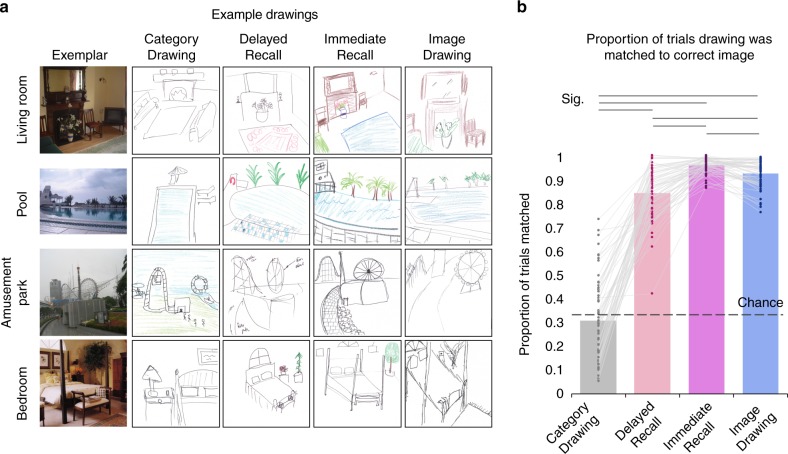Fig. 1.
Example drawings and drawing matching performance. a Example drawings made from Category Drawing, Delayed Recall, Immediate Recall, and Image Drawing conditions for four exemplars from the 30 image categories (see Supplementary Figure 1 for examples from all 30 categories). Both Delayed Recall and Immediate Recall participants drew complex drawings, including multiple objects, spatial relationships of objects, and spatial layout of the scene. The Category Drawings show what sort of information is present in the canonical representation of each category. Delayed Recall and Immediate Recall participants are clearly using information from memory beyond just an image’s category name, given the accurate object and spatial information in their drawings. b The average proportion of correct AMT worker matches of each drawing type (Category Drawing, Delayed Recall, Immediate Recall, Image Drawing). Each dot indicates each of the 60 images used in the experiment across drawings, and lines connect the same image across the different drawing conditions. Horizontal lines above the graph show all significant pairwise Wilcoxon rank-sum test comparisons at a Bonferroni-corrected level of p < 0.0083. The Category Drawings indicate the average proportion of matches with the two exemplars used in the study, even though there is no “correct” answer for this condition. All scene images in the manuscript are from the publicly available SUN Database for research of scene images49

